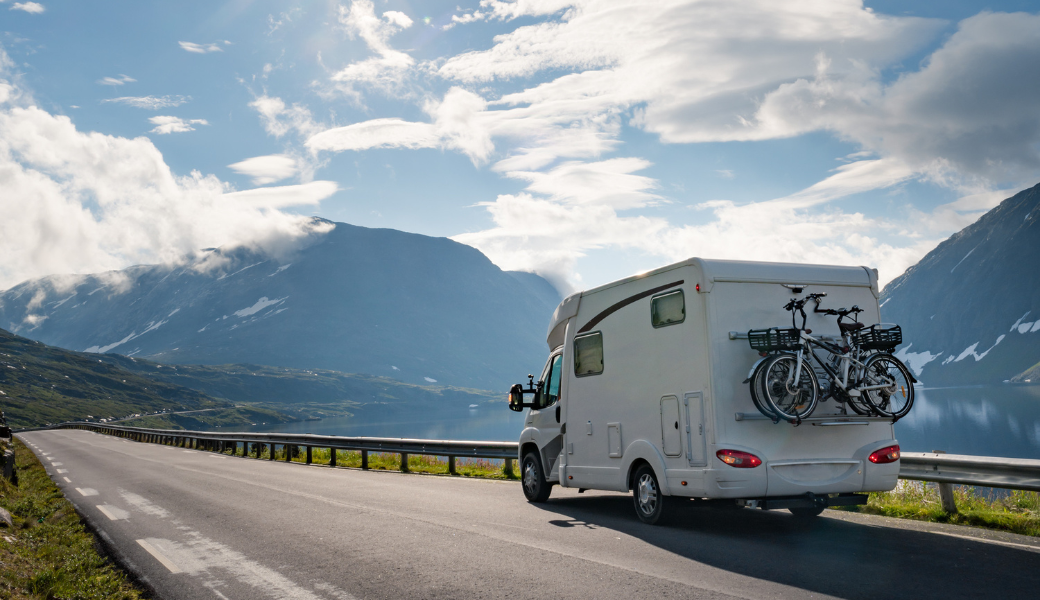Sneak Peak At Path To Purchase Study Available To Members

The Go RVing team presented the high-level findings of the Go RVing Path to Purchase Study last week in Las Vegas during the RV Dealers Association 2022 Expo. The team, Director of Strategic Marketing & Communications Courtney Bias, Senior Manager of Strategic Marketing & Data Analytics Sarah Neely, Senior Manager Programs & Experiential Events Dana DelVecchio, and Strategic Content Manager Jenna Tomovich, went through the consumer journey process from Spark, to Research, to Consideration, to Dealer, and then to Buy. Approximately 65-70 people attended the session to learn about the consumer journey and buying process and ways to make touchpoints along the way more impactful. The presentation covered a fraction of the study and presented very high-level results to participants and set the stage for the release of the full study early next year. The presentation deck can be accessed here.
The Path to Purchase Study, conducted by IPSOS, was commissioned to understand and illustrate the customer path to purchase experience through qualitative interview and focused on three groups – owners, intenders, and abandons. The results of the study identified impactful moments that matter, pain points, and moments of delight throughout the purchase journey and will offer recommendations of focus and improvements for the RV industry.
The team presented the findings that the most impactful event on future RV ownership in adulthood is childhood camping and outdoor experiences. “The study showed that people who had experience with tent or cabin camping, or who had family members who owned an RV were more likely to purchase an RV as an adult,” said Neely. “This initial experience, or repeat experiences, serve as the initial spark of interest that leads to a long-term love of the outdoors and increases the potential that a person will become an RV owner during adulthood.”
For most first-time buyers, the research phase of the purchase process takes anywhere from one to six months. “When it comes to researching RVs, experiential or in-person channels resonate best,” said Bias. “Most participants said that talking with other owners such as friends, family, or coworkers was the best research tool to get them initially interested in RVing followed by digital sources like social media and YouTube. This means that providing a great buying experience for each customer is vital as these customers will go on to be brand ambassadors to their friends and family for not just RVs, but for the dealership as well.”
The industry can improve the research process for customers by giving website visitors as much information as possible – including photos and video tours of units. Customers have a desire to explore the many different RV brands and “the top brands to own” during the research stage but navigating websites proves to be a difficult and painful experience due to brand confusion and limited filtering functions.
Among those successfully completing the purchase journey, the dealership serves a critical role as a research tool for customers to easily see units in-person prior to making a purchase. There is, however, a great reluctance among many to visit for fear of hard sales tactics and dealers not listening to or understanding needs – particularly when customers are not firmly solidified in their wants.
For customers arriving at the dealership with an exact RV type, model, and brand in mind, they are ready to buy and have greater success in doing so compared to those who arrive only sure of a few elements they want. This is an opportunity for dealers to position themselves as a trusted advisor by asking questions, listening to needs, showing models of interest, sharing real-personal camping/RVing experiences, and avoiding a bait-and-switch scenario – especially for those customers lacking their own personal camping and RVing experiences.
There are also a lot of unrealistic expectations of intenders and abandons of what RVing is. People think that they can come in and get a Class A, but they make $50,000 a year, and that’s going to be difficult with that budget. Many people don’t necessarily think about a travel trailer and their ideas about RVing have been curated by the Instagram mindset of what RVing is, which tends to be more heavily geared to the motorized category. Once they get into the dealership and see the costs of a Class A, they think they can’t afford RVing at all because a travel trailer doesn’t even occur to them.
Findings also revealed that with the abandoning groups, a negative experience at the dealership, while rare, was so significant that it pushed them out of the RVing consideration set altogether and did not simply drive them from a particular dealership to another.
There were approximately 1,500 participants in the study conducted between July 2021 - February of 2022. Participants completed a 30-60 minute discussion through interviews via Teams or Zoom followed by a 20 minute online survey.
The full study, along with the companion study on repeat RV purchasers, will roll out in early 2023. It will be available to all RV Industry Association and RV Dealers Association members on both member websites as well as the Go RVing industry portal.
Please Sign in to View
Log in to view member-only content.
If you believe you are receiving this message in error contact us at memberservices@rvia.org.
